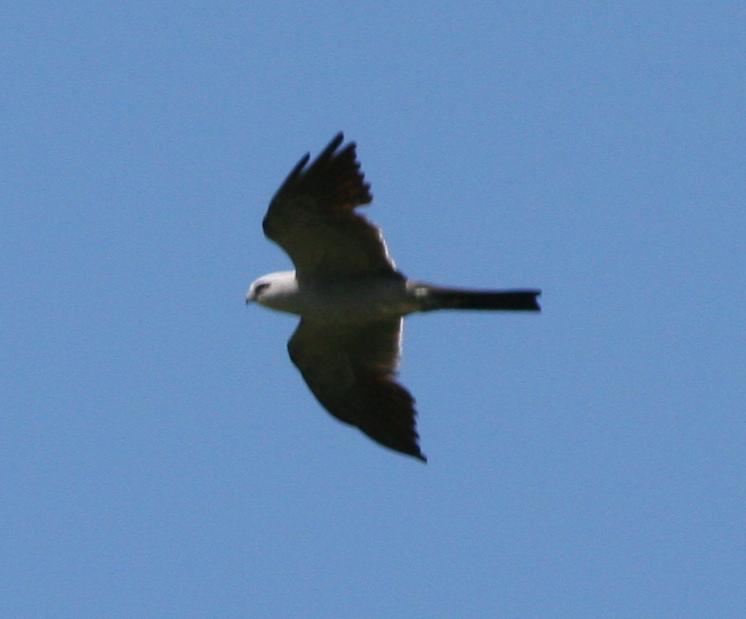

This call consists of a quick note followed by a long one that gradually lowers in pitch. The Mississippi Kite, a bird of prey found in North and South America, produces a distinctive call that is commonly described as a high, 2-syllable whistle. As the Mississippi Kite continues to expand its breeding range, its call will remain a familiar sound in many areas of the United States. The bird's distinctive call is an important part of its presence in the wild and highlights its role in the ecosystem. The Mississippi Kite's call is a unique and recognizable sound that is used for communication and warning signals. The bird's distinctive call is a testament to its presence in the wild and its importance in the ecosystem. However, recent years have seen the species making a comeback. In the mid-1900s, Mississippi Kite populations experienced a decline. When the bird is perched, the call is typically shorter and more abrupt.

For example, when the bird is in flight, its call can be more drawn out and melodic. Interestingly, the Mississippi Kite's call can vary slightly depending on the situation. The sound is often described as being sharp and clear, with a slight trill at the end. It is a high-pitched whistle that is distinct from other bird calls in the area.

The Mississippi Kite's call is a unique sound that can be easily recognized in the wild. In these situations, the kite will produce a more emphatic version of its call, often attracting other kites to join in. The call is also used as a warning signal when a predator is present. It is an effective way for the bird to communicate with oher kites in the area. The Mississippi Kite uses its call to advertise its presence while flying or perched. The call consists of a quick note followed by a long one that trails down in pitch. These birds are known for their distinctive call, which is a high-pitched, 2-syllable whistle. The Mississippi Kite is a bird of prey that inhabits a wide range of habitats, from open woodlands to suburban areas.


 0 kommentar(er)
0 kommentar(er)
